
Common Loons
The weather in the eastern half of the United States has been nutty for the past week. A large storm system than spanned from the Mississippi River eastward to the Appalachian Mountains has been stalled, dumping lots of rain in the midwest and preventing some of the birds to migrate north from the Gulf of Mexico. At the same time, another low pressure system has been stalled in the Atlantic Ocean just off the east coast, and has been pumping winds in from the northeast, with lots of the moisture backing up along the Blue Ridge Mountains where I live. Birds that normally reside or migrate north along the east coast are being pushed westward, and we are seeing some birds that usually are not this far inland.
It started raining on Monday (5/6/13), and by nightfall on Tuesday there was four inches of rain in our rain gauge, and close to six inches fell on the mountain, almost all of it during Tuesday afternoon. Meanwhile, some birders braved the rain or dodged the raindrops, and there were local reports of Red Phalaropes, Red-necked Phalaropes, Tri-colored Herons, and Common Loons in breeding plumage.
Walt Childs called me late on Tuesday to see if I wanted to go looking for some of these rarities on Wednesday morning (5/8/13). I said that we should watch the weather forecast, as the same rain pattern that fell on Tuesday had been forecasted for today. But I was eager to try. I had seen small flocks of Red Phalaropes from a distance on the North Atlantic Ocean, Red-necked Phalaropes would be a new life bird for me, and I had only seen Common Loons in non-breeding plumage, and was chomping at the bit to get some good photos of one in breeding plumage.
When Walt picked me up at 8:30 this morning, there was light rain, so I got out my camera rain gear to protect my equipment, and suggested that we first stop here in Stoney Creek at Lake Monocan to see if any of these birds might be on the lake. Jackpot! There were a dozen Common Loons in breeding plumage on Lake Monocan.

Common Loons
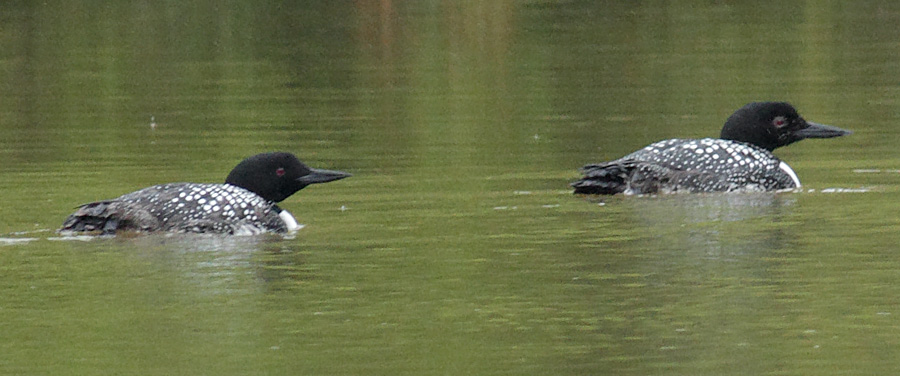
Common Loons

Common Loons
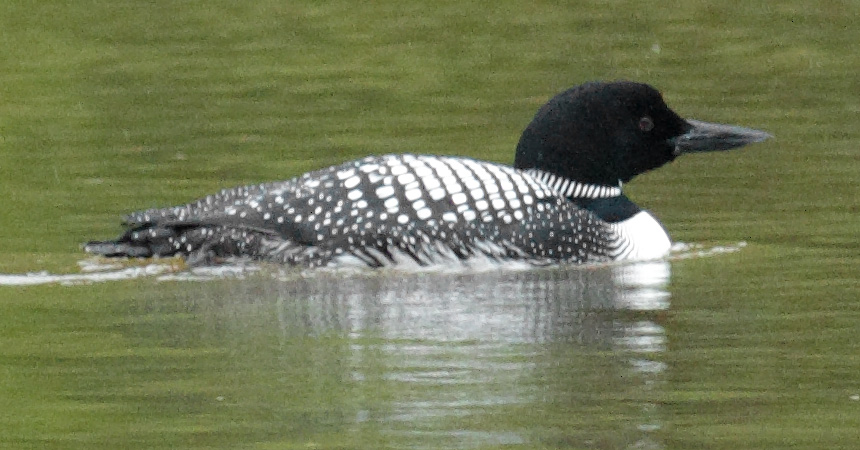
Common Loon
Our second stop was at the Old Trail golf course pond in Crozet. As we drove just past the golf course gate, I looked at a tee box and saw a pair of Semipalmated Plovers, several Ring-billed Gulls, and a Bonaparte's Gull - all coastal birds.
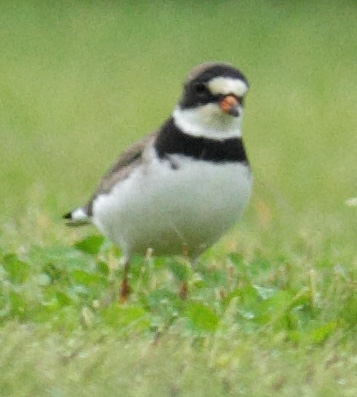
Semipalmated Plover
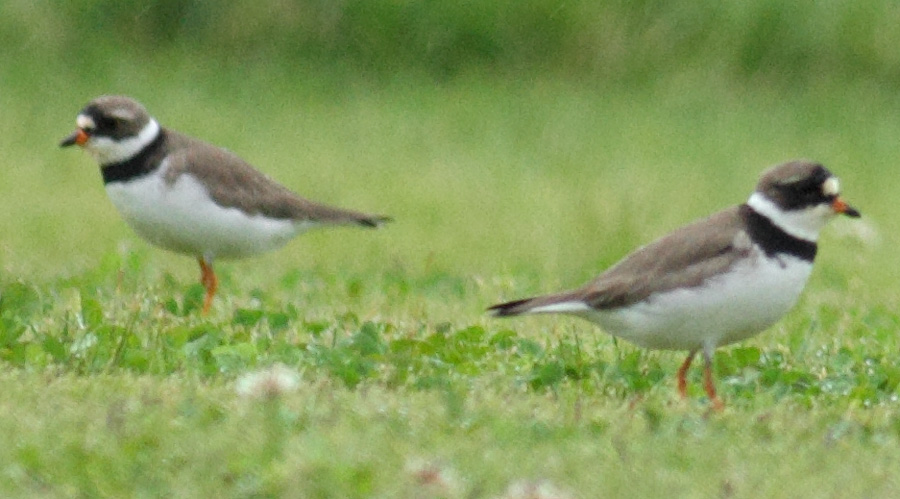
Semipalmated Plovers
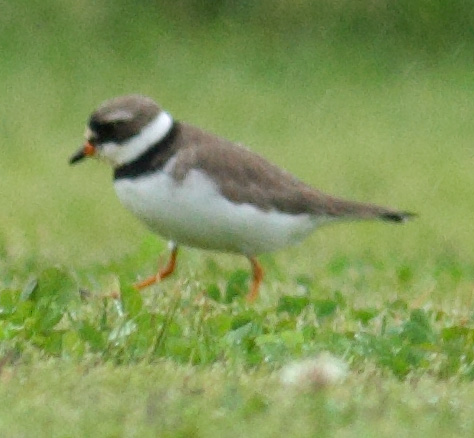
Semipalmated Plover
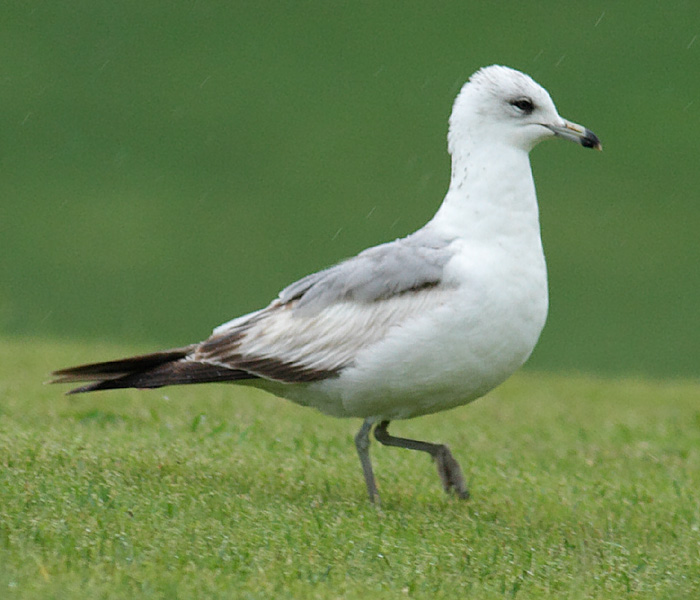
Ring-billed Gull
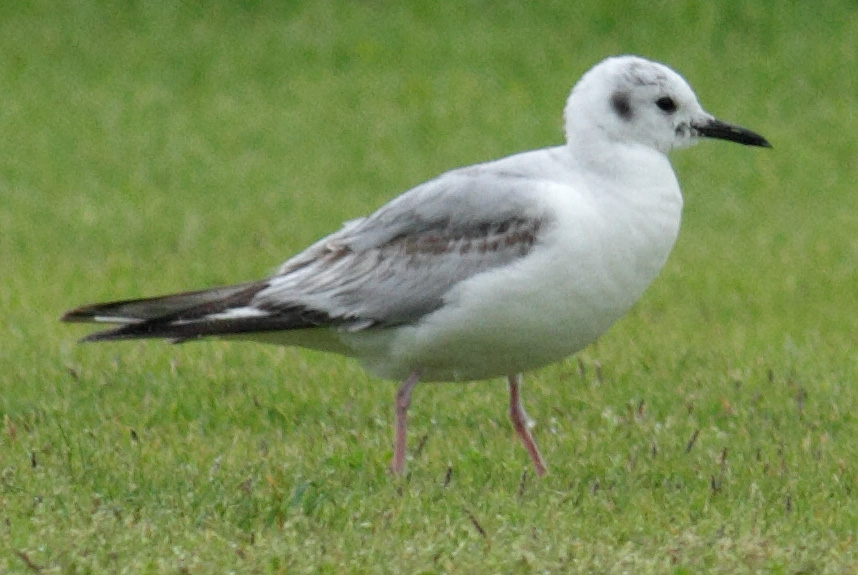
Bonaparte's Gull
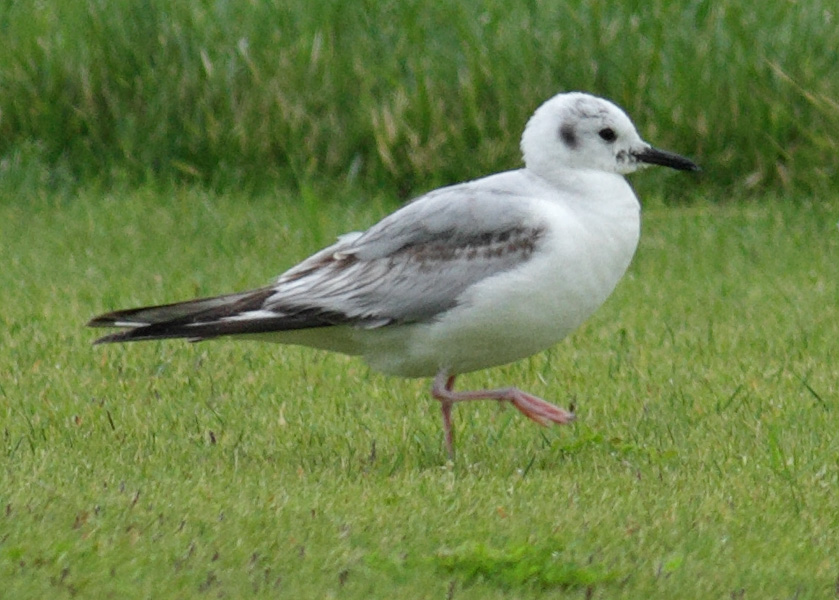
Bonaparte's Gull
There were three Common Loons in the pond, each with a different amount of breeding plumage.
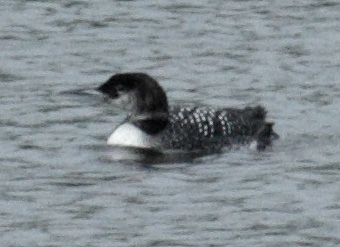
Common Loon
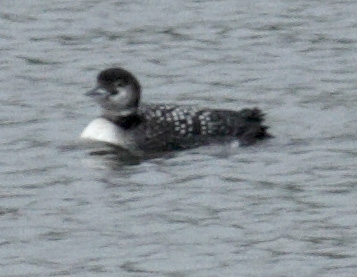
Common Loon
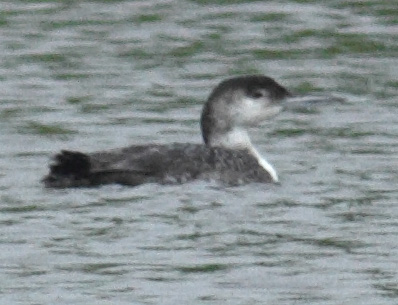
Common Loon
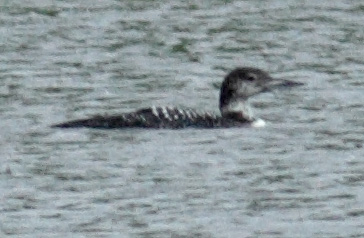
Common Loon
It was still drizzling, but we decided to head over to Beaver Creek Lake. We saw American Redstarts and Yellow-rumped Warblers in trees along the lake. One of the YR Warblers had the brightest yellow crown patch that I have ever seen. There was a single Common Loon and a lone female Common Merganser in the lake.
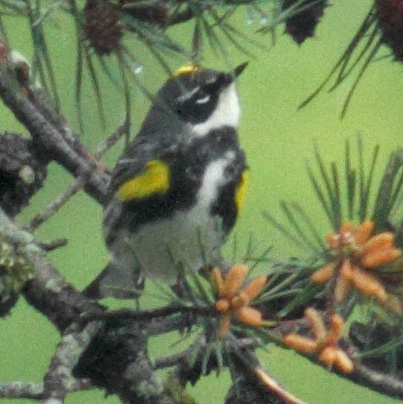
Yellow-rumped Warbler
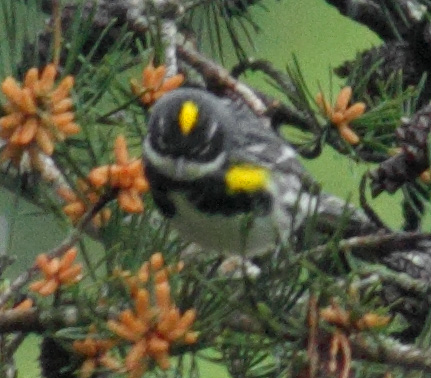
Yellow-rumped Warbler
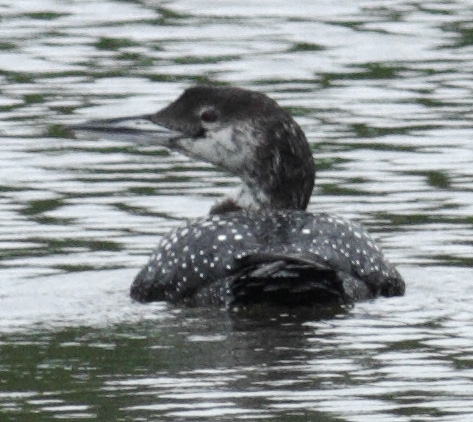
Common Loon
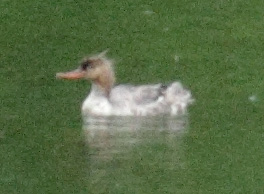
Female Common Merganser
From there, we checked out the lakes in Mint Springs Park - another Common Loon! and a Spotted Sandpiper.
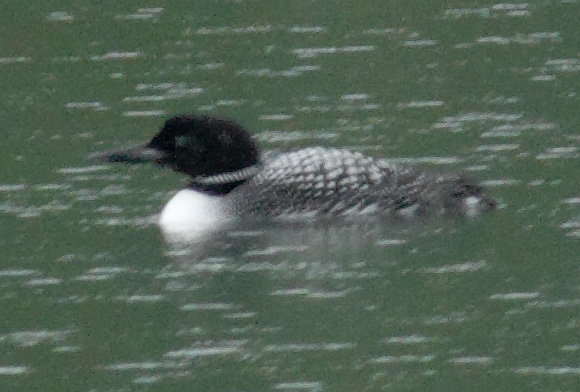
Common Loon
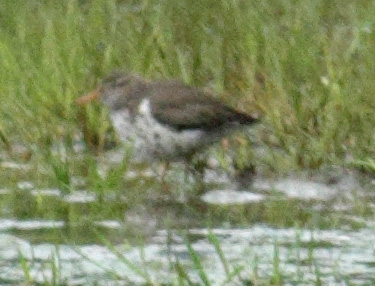
Spotted Sandpiper
Our next stop was at King Family Vineyards. We saw Greater Yellowlegs, Mallards, Solitary Sandpipers, Spotted Sandpipers, a pair of Green Herons, Red-winged Blackbirds, Swallows, and a large flock of Bobolinks.
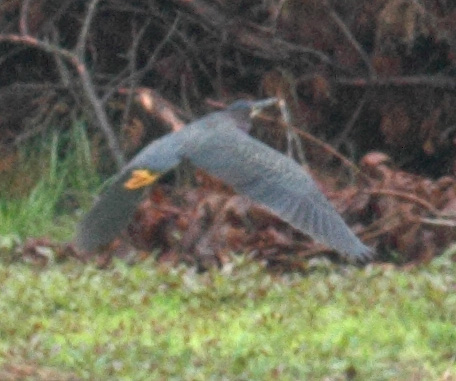
Green Heron
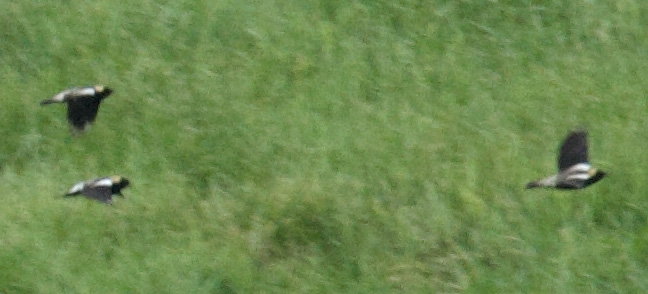
Bobolinks
When I was processing my photos, I noticed two small Sandpipers flying along with the Greater Yellowlegs.
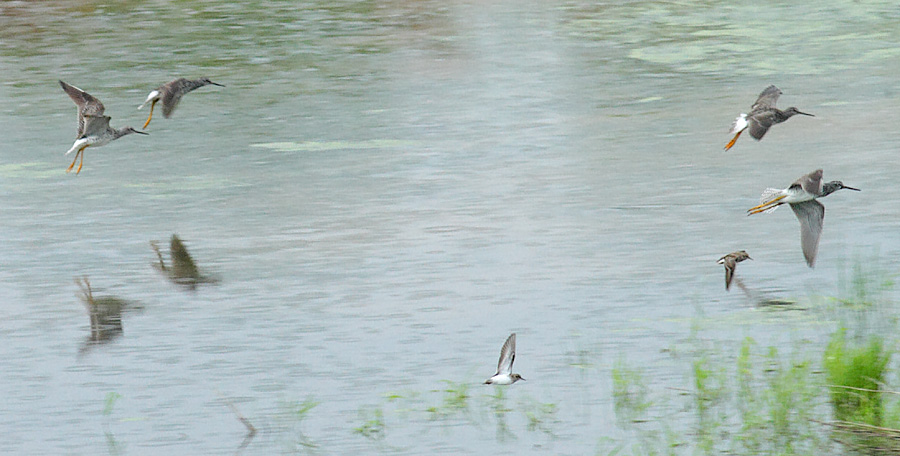
Greater Yellowlegs
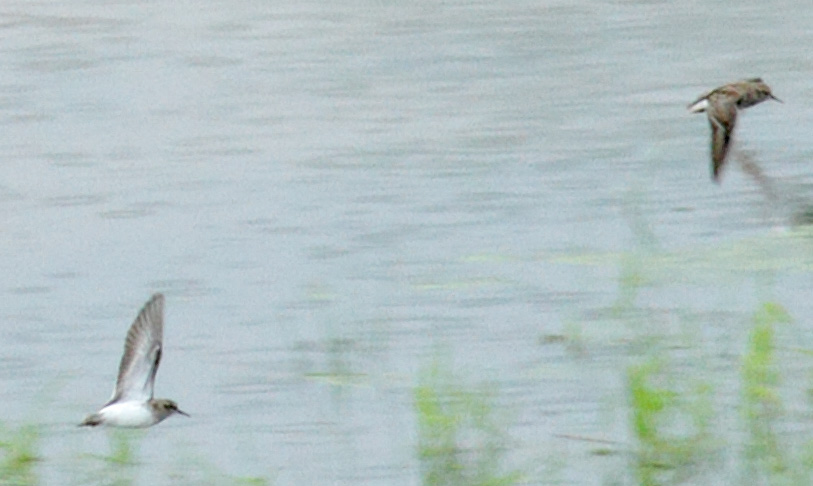
Small sandpipers
Both small sandpipers appear to have dark eye bars and short, thin, straight bills. Their relative size compared with the Greater Yellowlegs suggests one of the three "peeps." However, the wings look too long, the white upper wing marking too contrasty, and the bill too straight for a Least Sandpiper. The bill looks too short and straight for a Western Sandpiper, and the rufous upper scapulars are not a feature of a Semipalmated Sandpiper. And none of the three peeps have a dark eye bar, so I don't know what these two little birds are, other than some kind of shorebird.
After spending some time at King Family Vineyards, it was starting to rain even more, and we headed over Afton Mountain in heavy rain and dense fog. The weather wasn't too bad on the Shenandoah Valley side. We went to the Stuart's Draft sewage treatment plant were phalaropes were also seen yesterday. Just before arriving at the plant, we saw a very wet Red-tailed Hawk drying out its feathers. As we drove into the plant area, we saw a few White-crowned Sparrows. There were lots of swallows flying over the water there, but no phalaropes. At least one of the swallows was a Cliff Swallow. We heard lots of cows complaining in the adjacent field, and saw that most of the field was flooded. As we left the plant, a Savannah Sparrow came right up to the car, with more importance paid to finding food than my taking photos. And we saw a Red-tailed Hawk just outside the plant, probably the one we saw driving in. And then the skies got really dark, so we ended our birding trip.
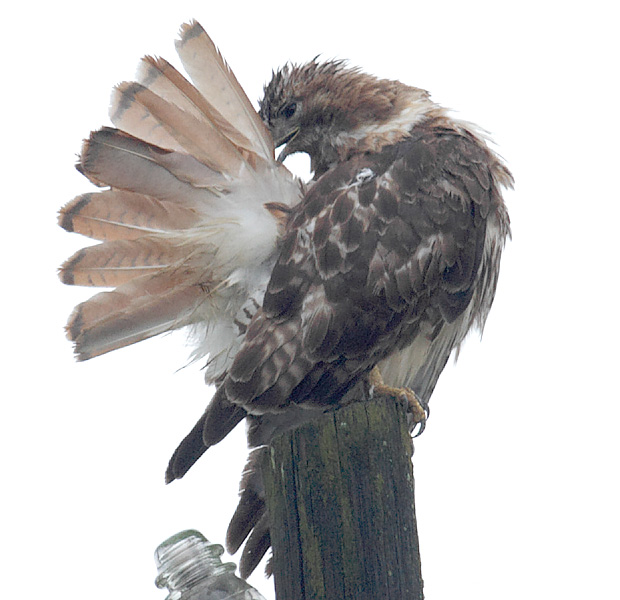
Red-tailed Hawk
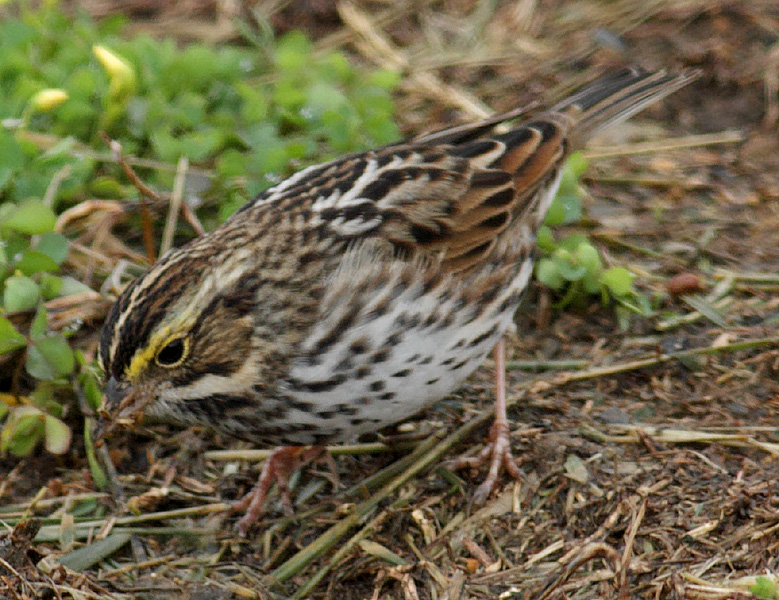
Savannah Sparrow
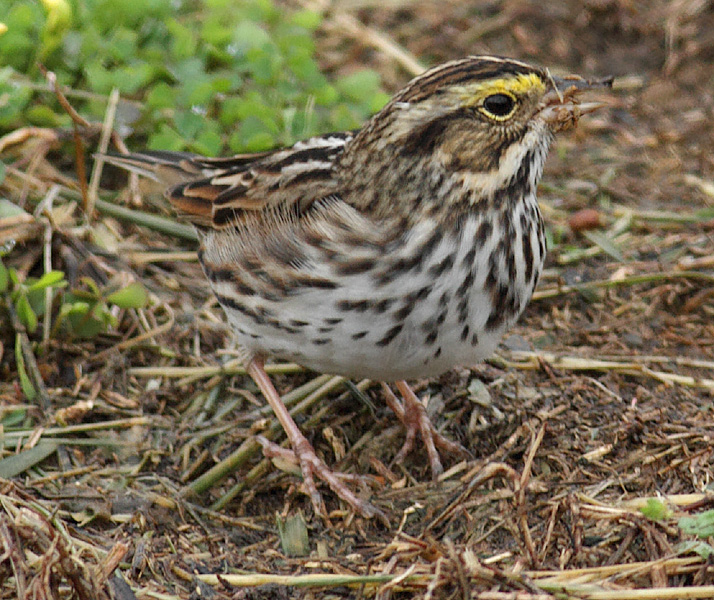
Savannah Sparrow
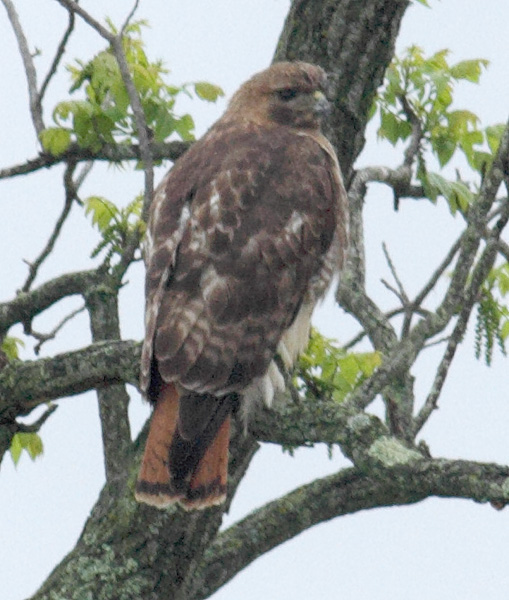
Red-tailed Hawk
By late afternoon, the skies began to clear. After an early dinner, I went down at 6:45 p.m. to Lake Monocan to see if any new birds had arrived. There was a single Common Loon swimming with a female Common Merganser. Two Pied-billed Grebes swam with them some of the time. A lone Spotted Sandpiper was on the small beach, and a Green Heron flew across the lake.
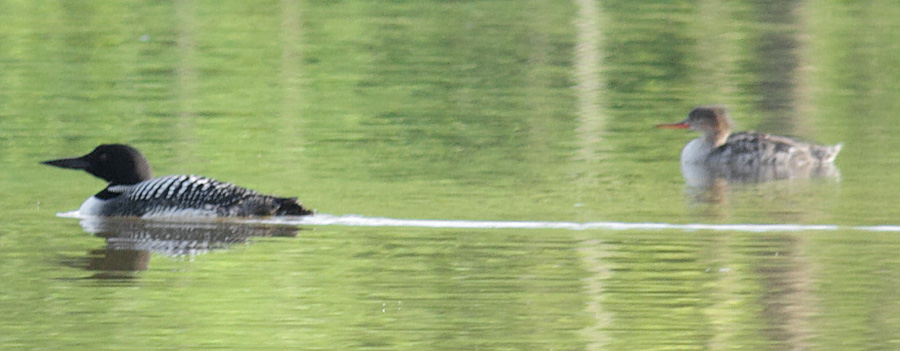
Common Loon and female Common Merganser
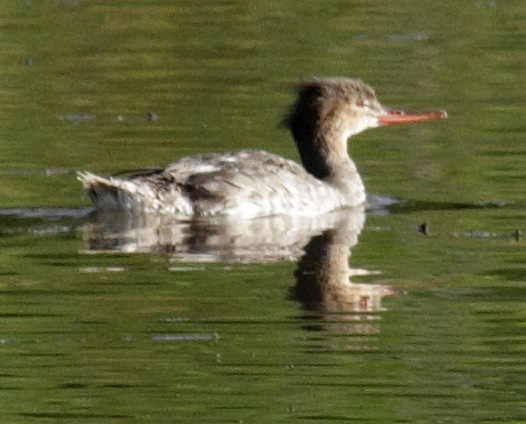
Female Common Merganser
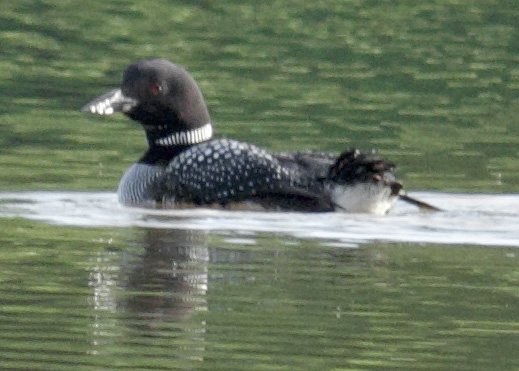
Common Loon
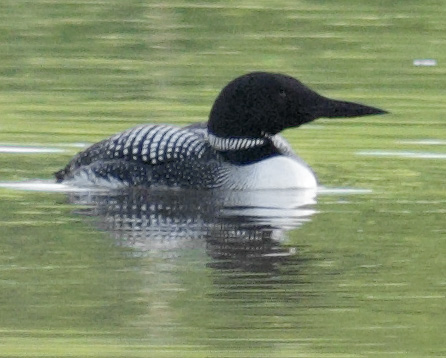
Common Loon
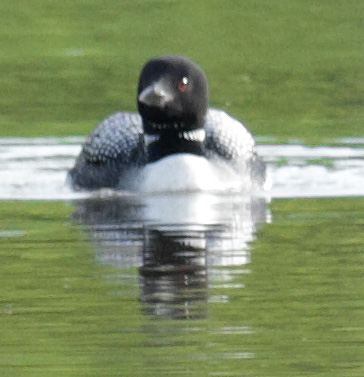
Common Loon
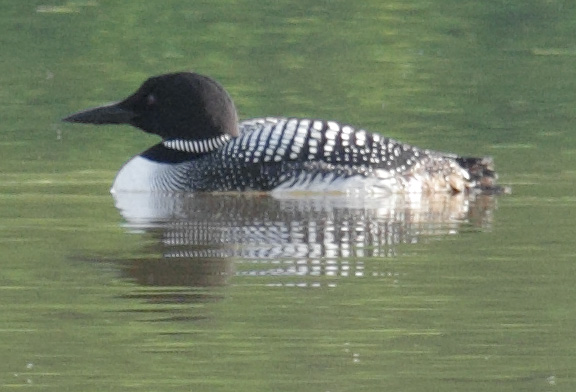
Common Loon
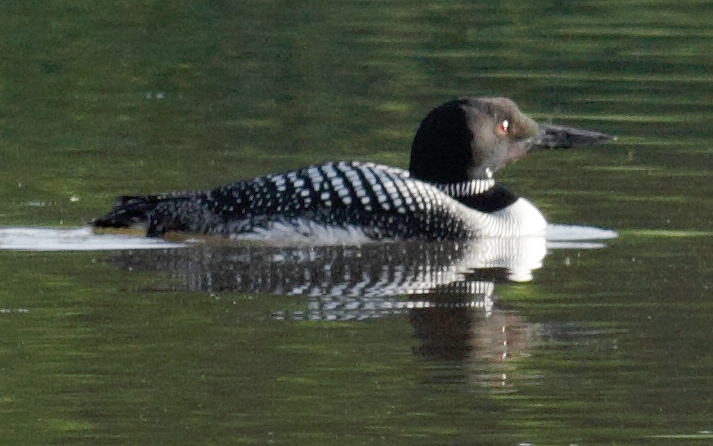
Common Loon
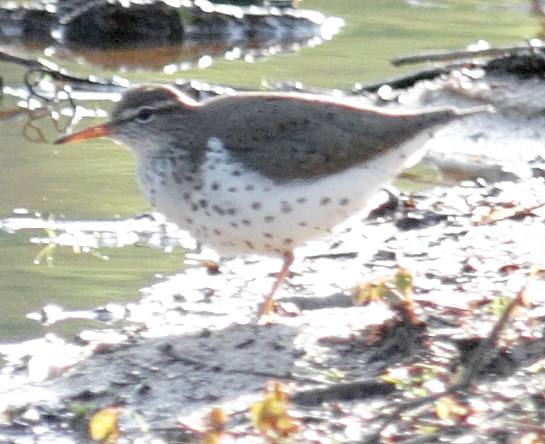
Spotted Sandpiper
Finally, to cap off this "Looney" day, an Osprey appeared over the lake, and circled several times as it looked down into the water. I kept waiting for it to make its dive for dinner, but it decided to hunt elsewhere.
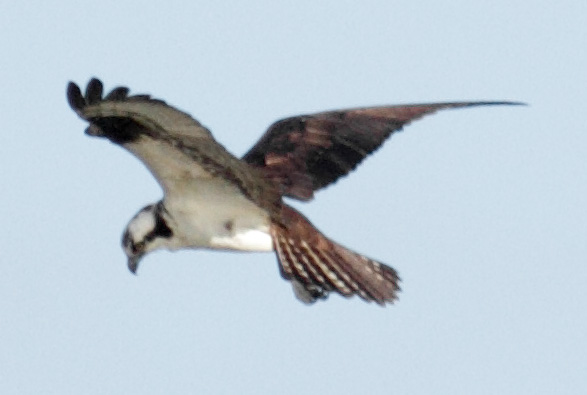
Osprey
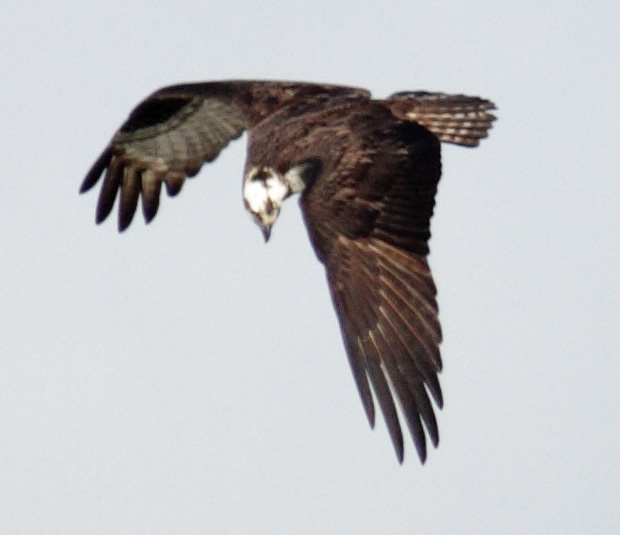
Osprey
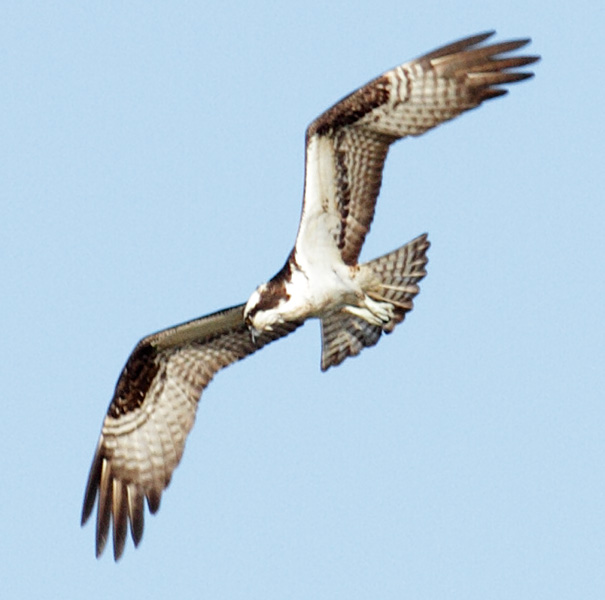
Osprey
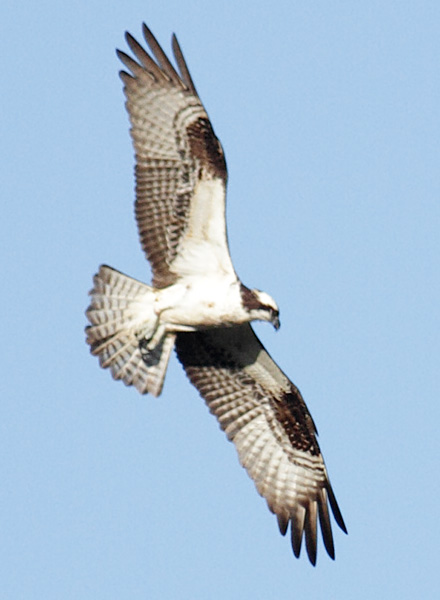
Osprey